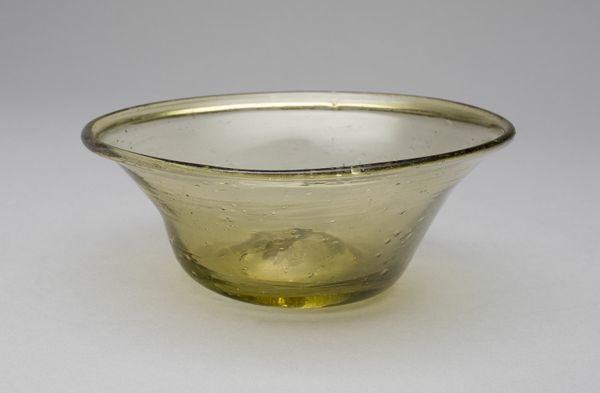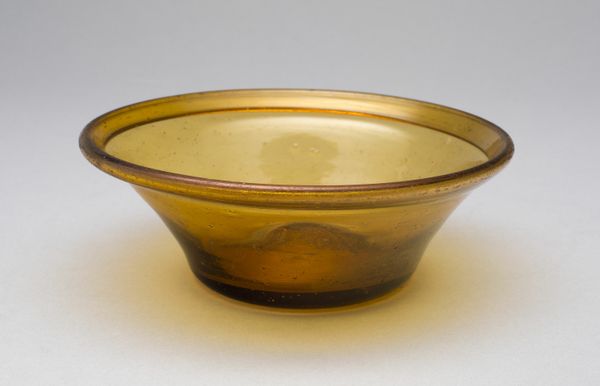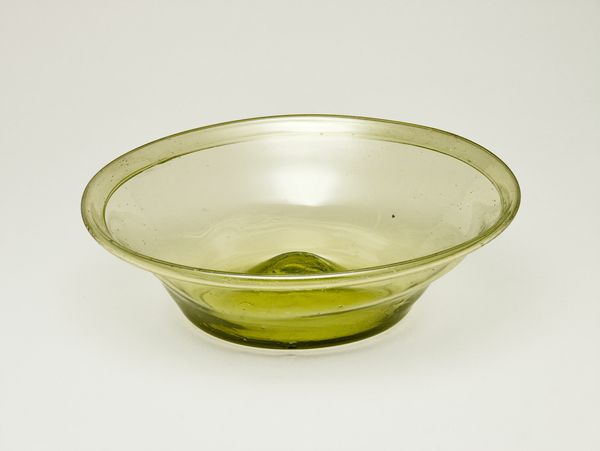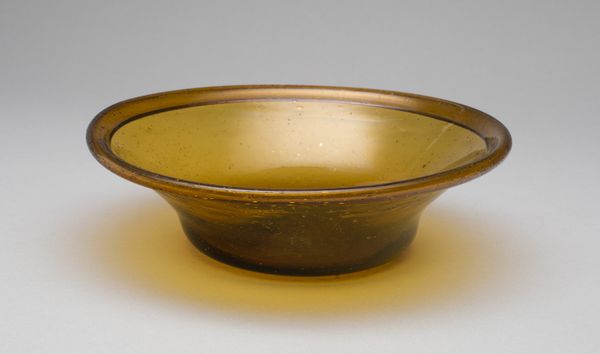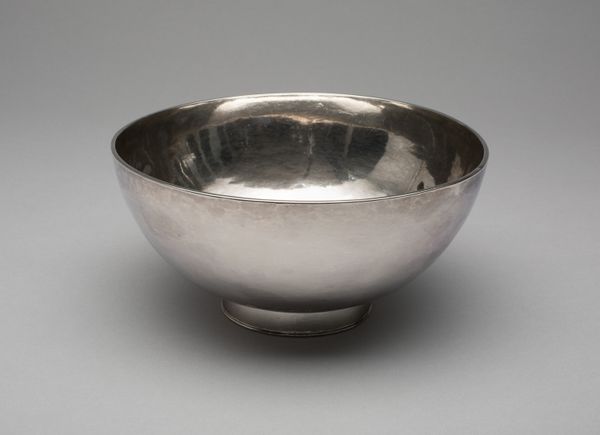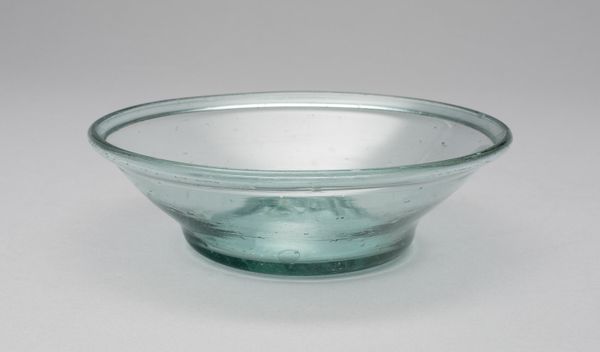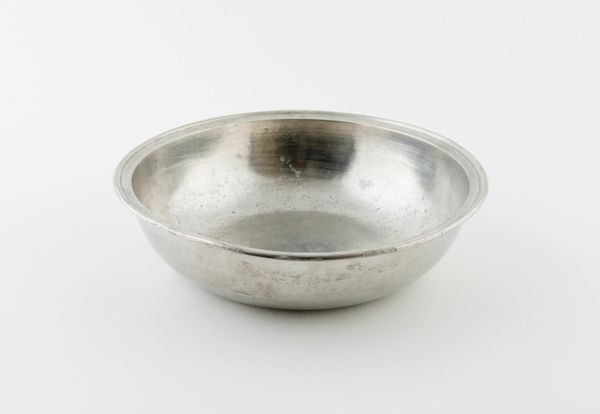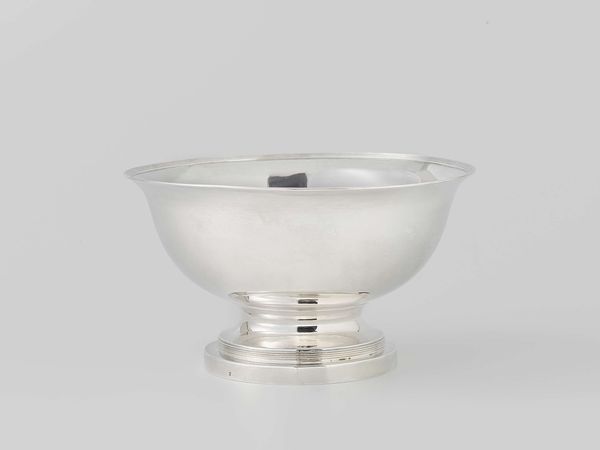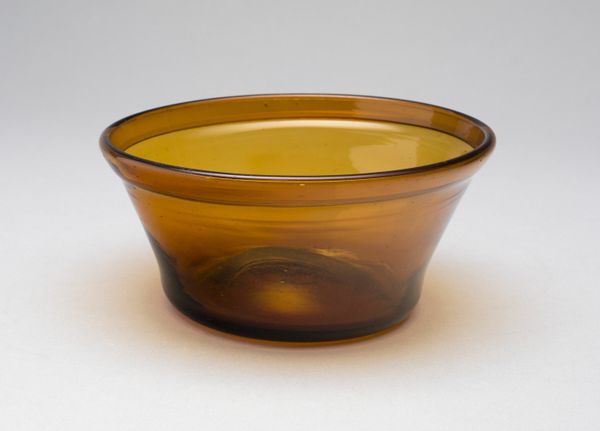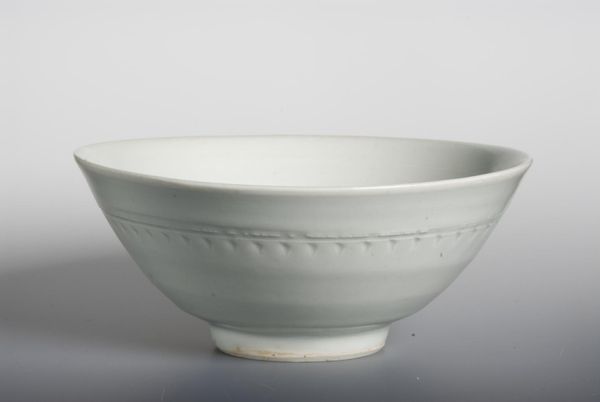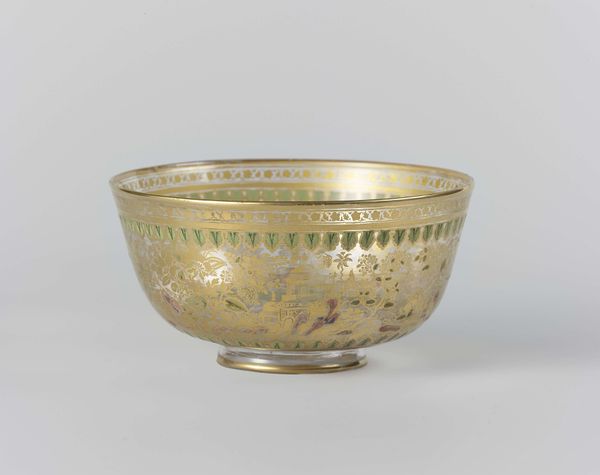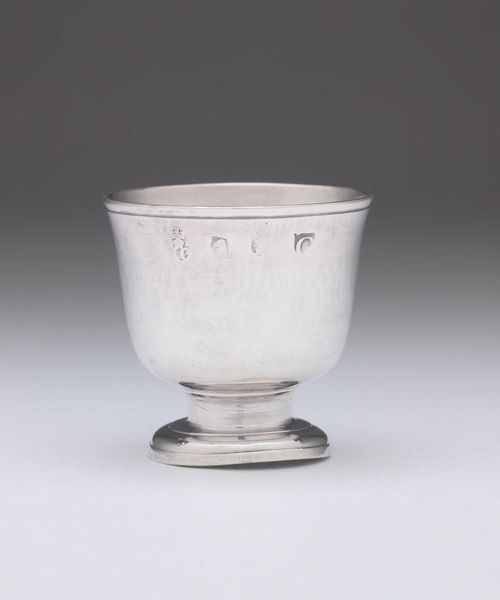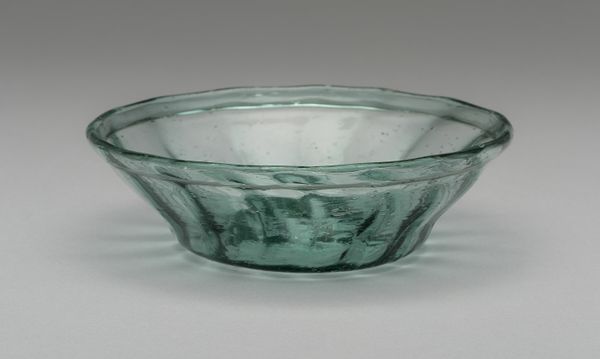
glass
#
glass
#
ceramic
#
decorative-art
Dimensions: 4.5 × 12.1 × 12.1 cm (1 3/4 × 4 3/4 × 4 3/4 in.)
Copyright: Public Domain
Curator: We’re looking at a glass bowl titled “Pan,” created sometime between 1824 and 1832 by an anonymous artist. It resides here at The Art Institute of Chicago. It's quite an understated piece, wouldn’t you agree? Editor: Indeed, it is! My first impression is of its delicate nature. That slightly murky, muted greenish hue suggests fragility, even age. I wonder what it held, what ritual or purpose it served. Curator: Well, the muted tone does evoke a sense of history, placing it within a broader narrative of social class and the history of everyday objects. Glassware from this period often tells stories about shifts in wealth and consumerism. Were pieces like these symbols of status? What do you think? Editor: Possibly, yet looking at the formal qualities, that flaring lip and subtle curve leading to the base - it's almost a study in the manipulation of glass. The glass is allowed to have an unblemished appearance which gives the impression of transparency, simplicity, even. There's also a perfect, smooth transition from light to shadow in the curvature that invites closer inspection. Curator: Yes, but let's consider who had access to such objects and what it represented culturally. The availability of these items impacted power structures. Consumption wasn't simply a matter of aesthetics; it shaped societal values. The decorative-art style suggests aspirations of class, wealth, or refinement and how it intersected gender expectations in the home. Editor: I see what you mean, and context is always key. However, focusing purely on the bowl's appearance and form, that gentle olive tint could be symbolic as well, harking back to classical notions of nature, or maybe referencing popular color trends. It suggests an intentional design to blend form and hue which is a beautiful interplay. Curator: True, though the cultural weight of the object lies, perhaps, not only in its form, but what it represented to those who owned it or were excluded from owning it. Thinking of material studies, what narratives can an everyday item carry within broader networks of inequality? Editor: So it’s about context versus intention. What a complex conversation around something so simple. I guess an analysis incorporating both unlocks its story in richer ways. Curator: Absolutely! It’s a dialogue of art and life that adds value to what the artwork means to us today.
Comments
No comments
Be the first to comment and join the conversation on the ultimate creative platform.
